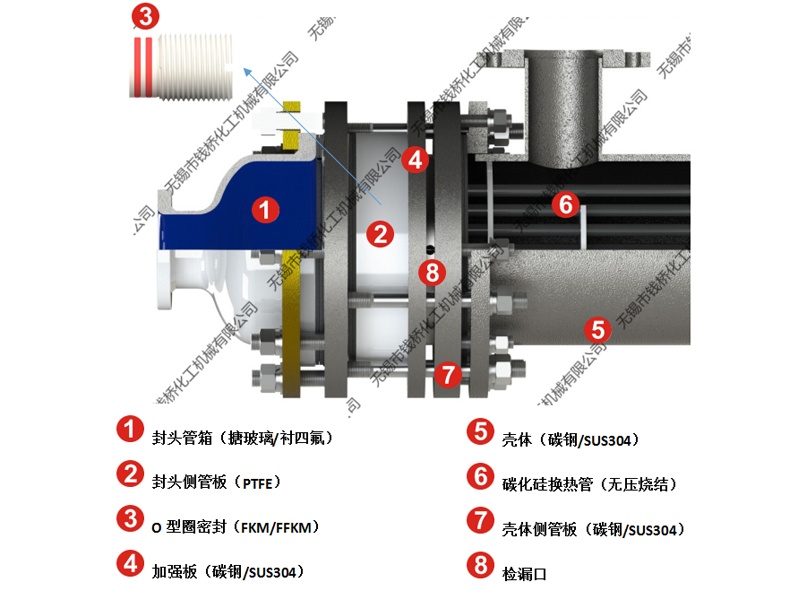
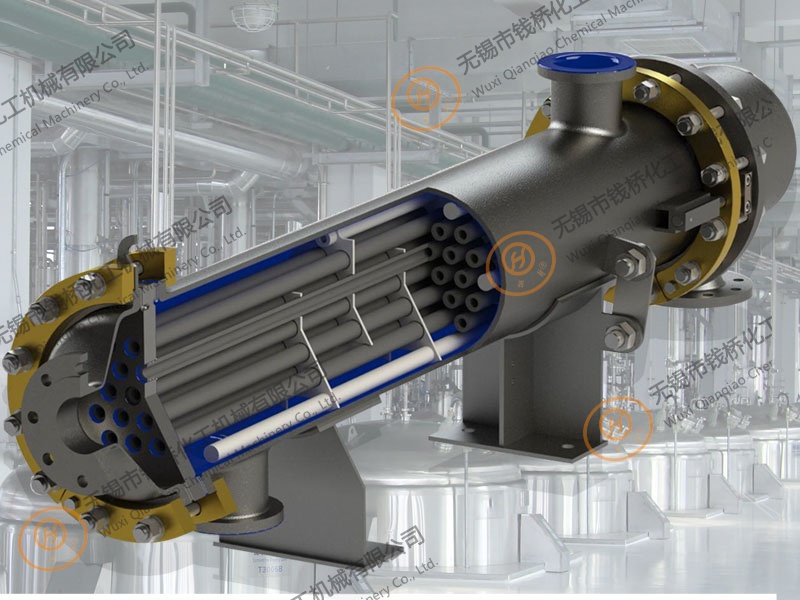
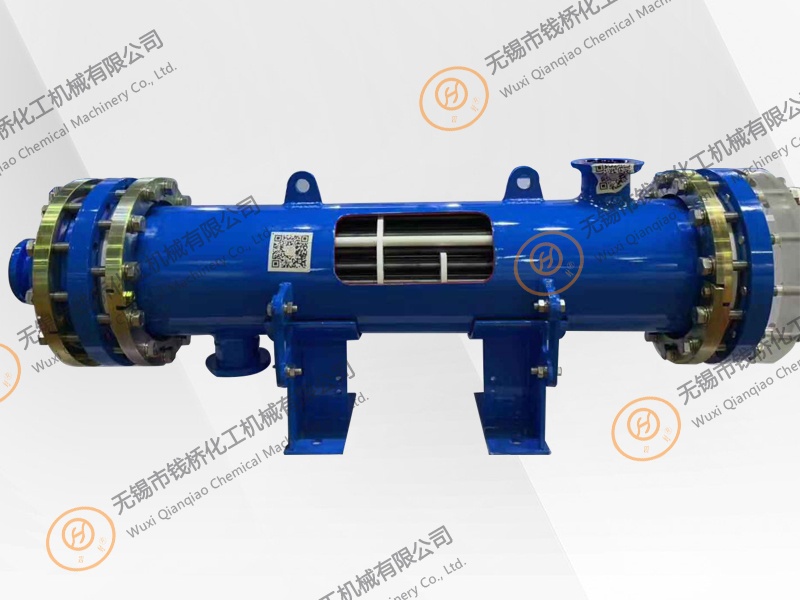
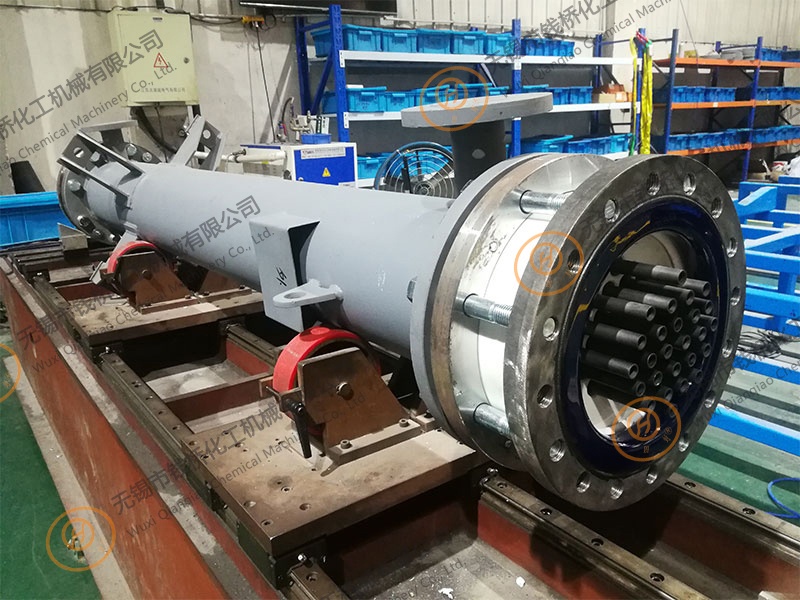
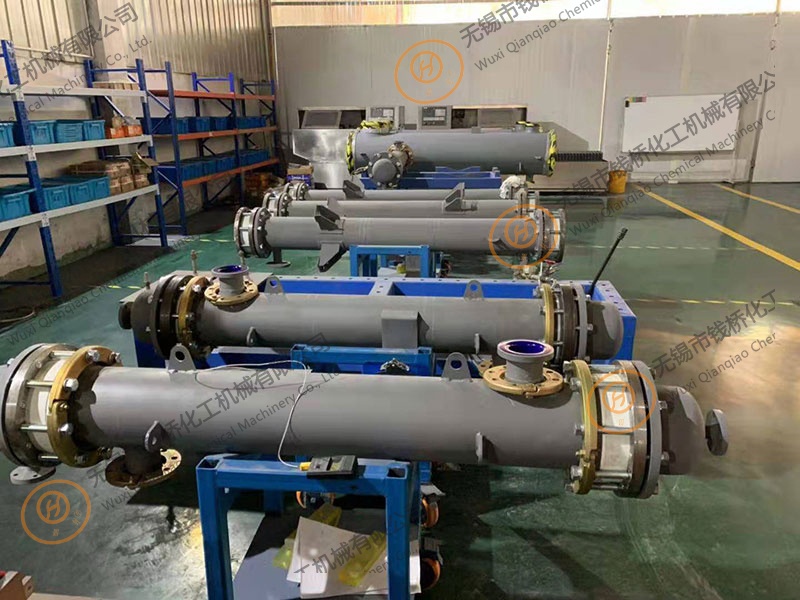
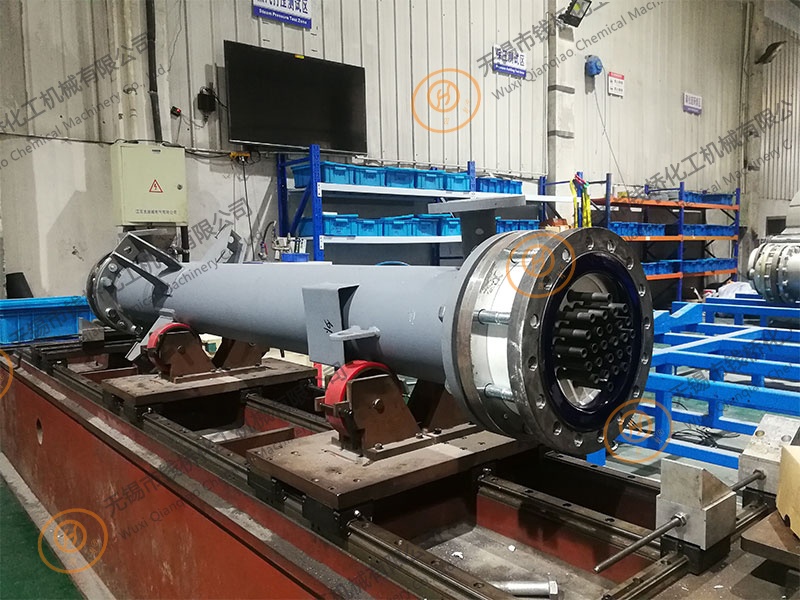
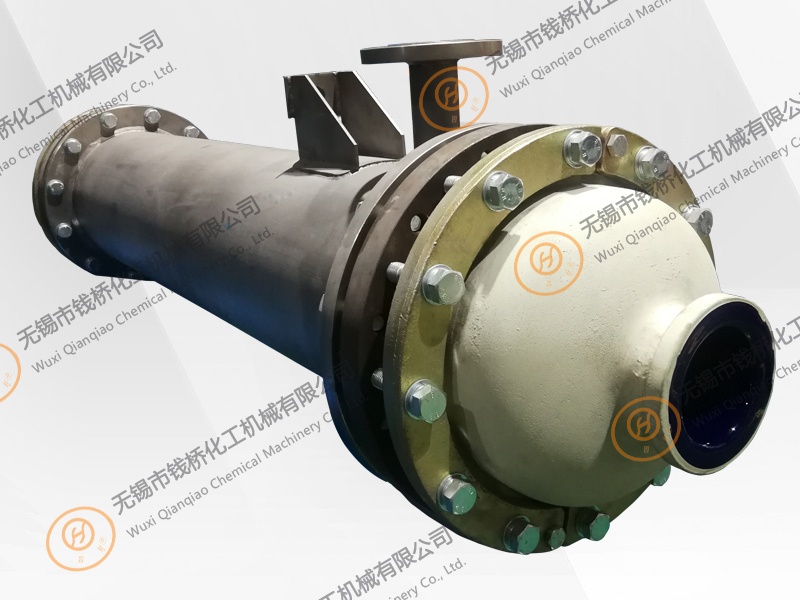
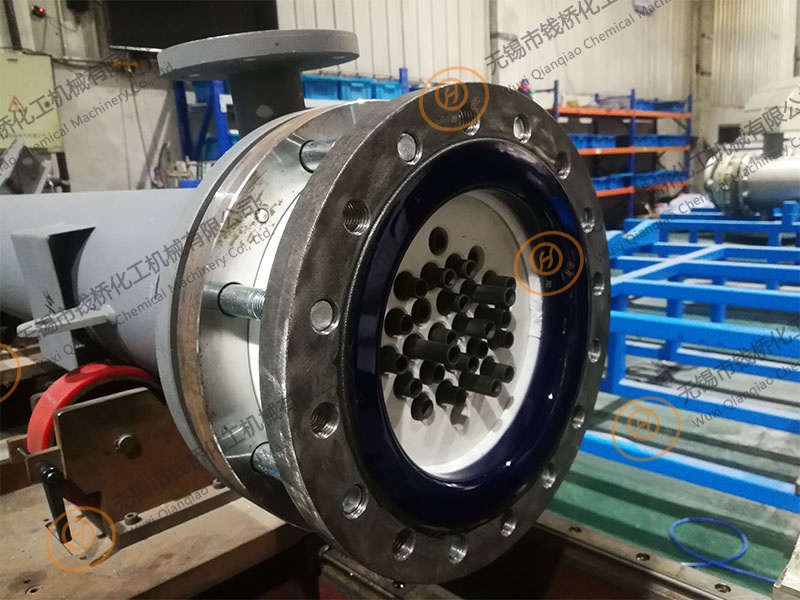
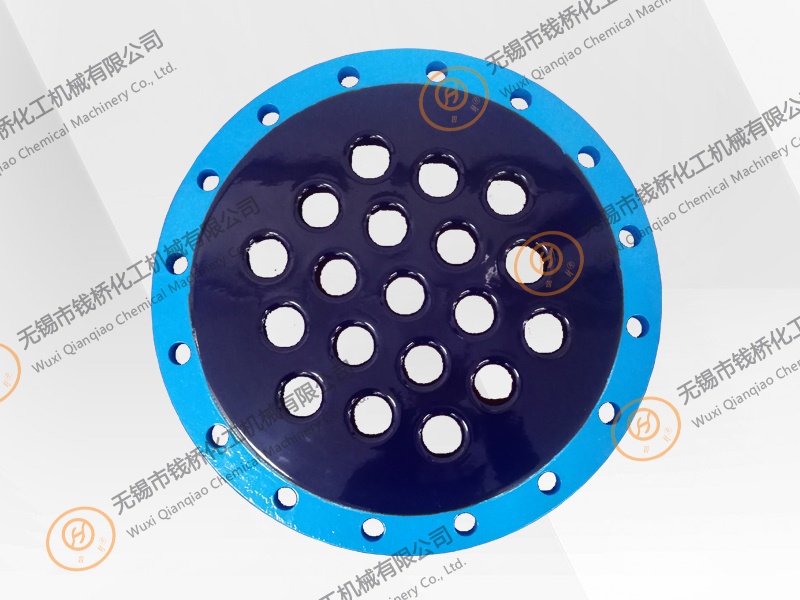
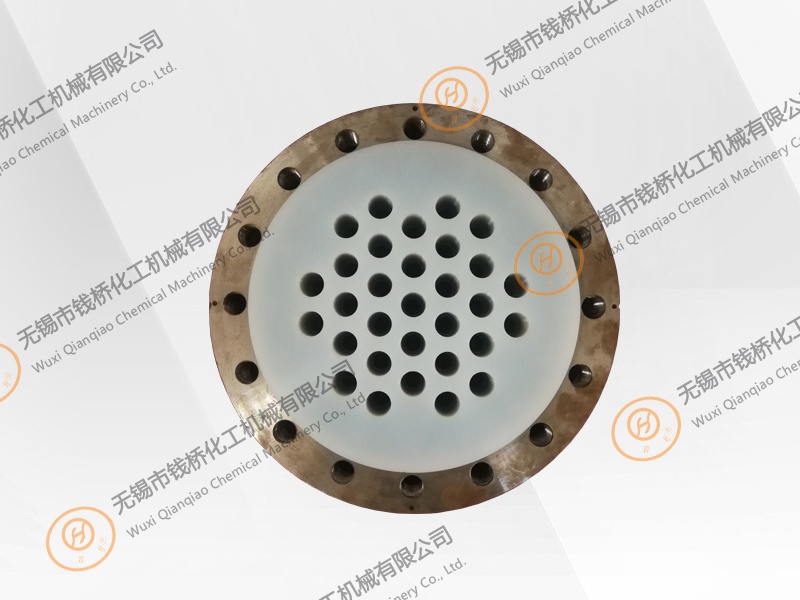
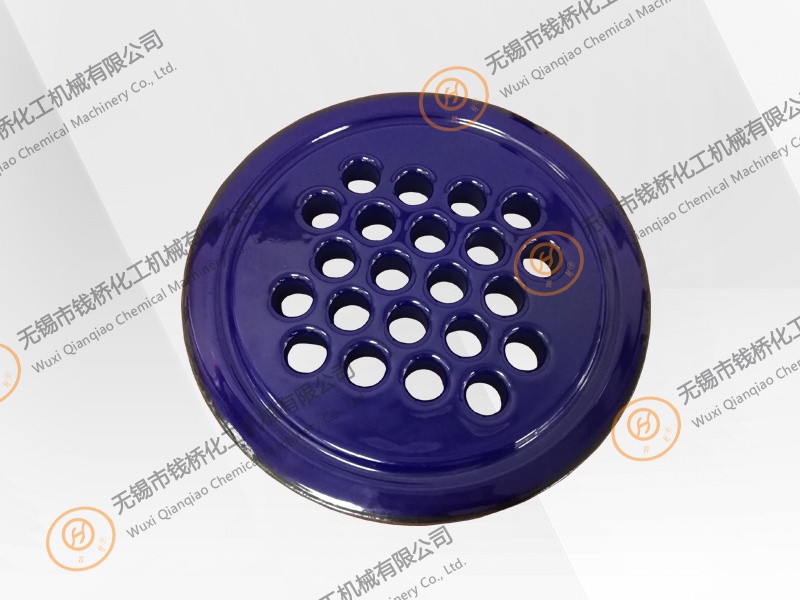
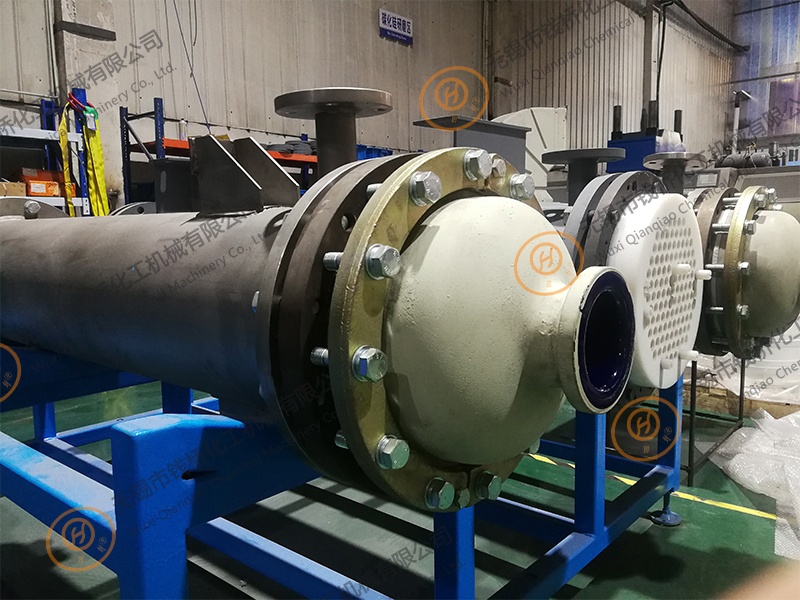
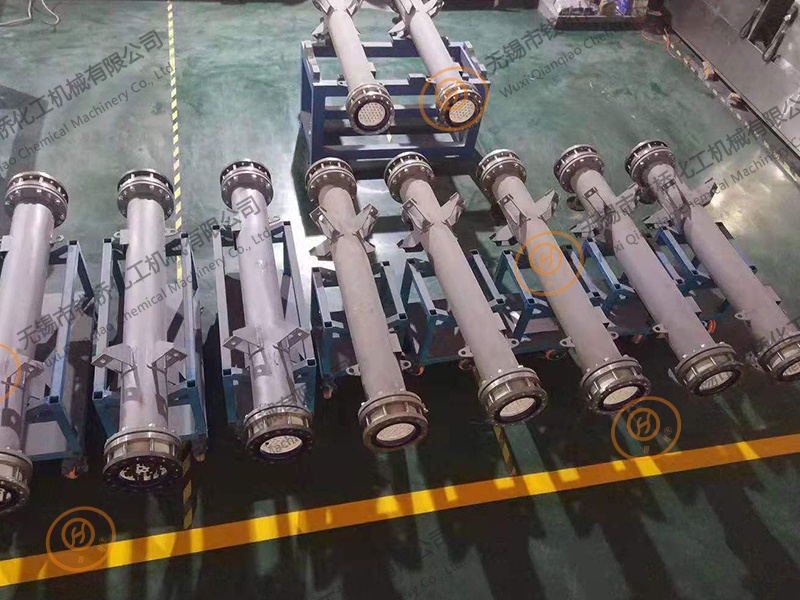
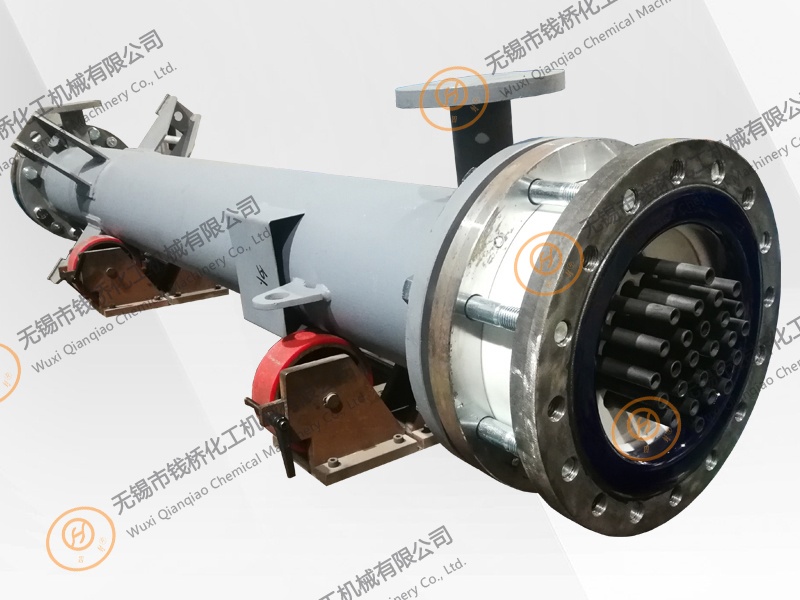
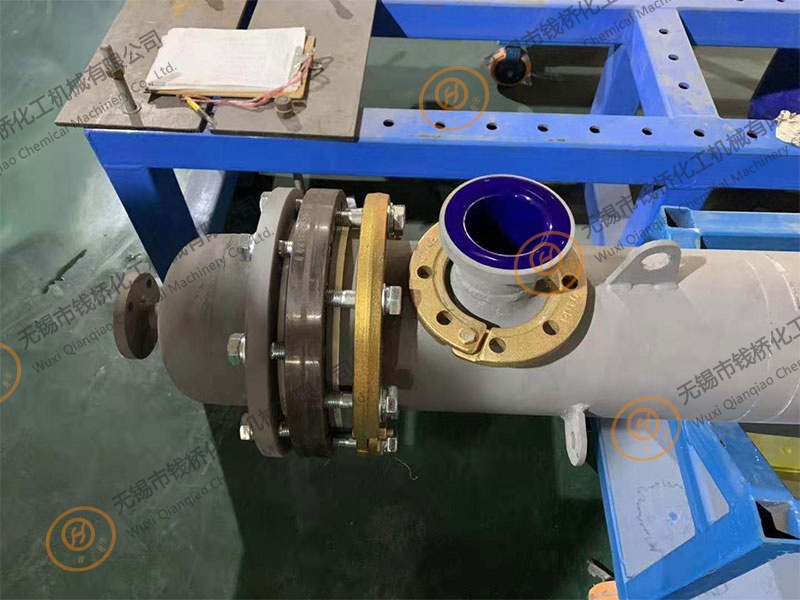
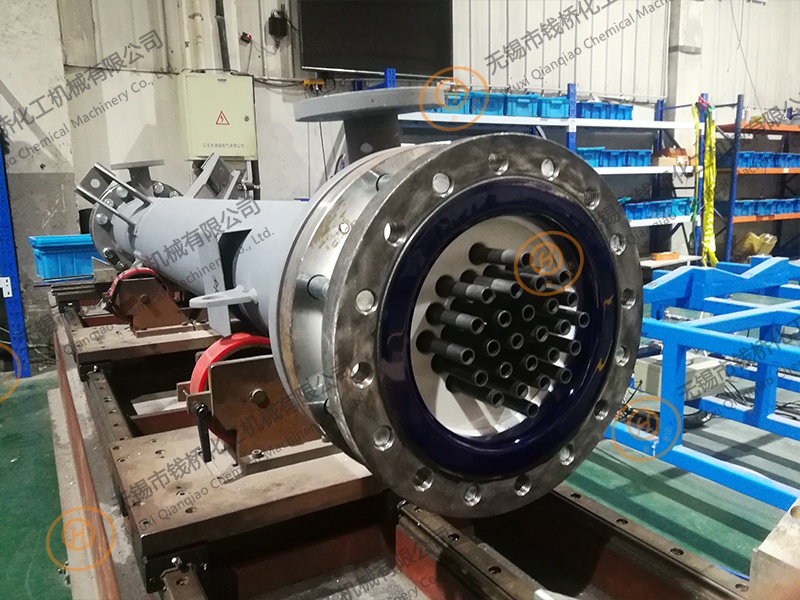
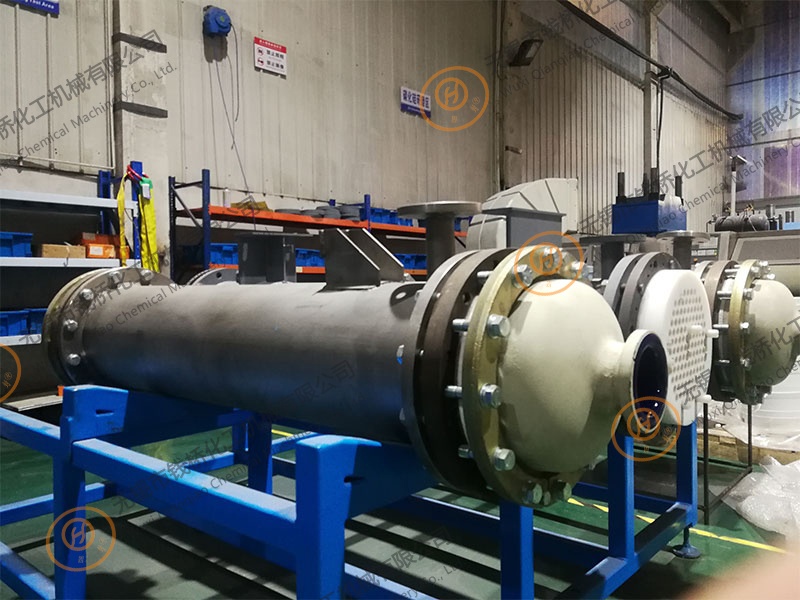
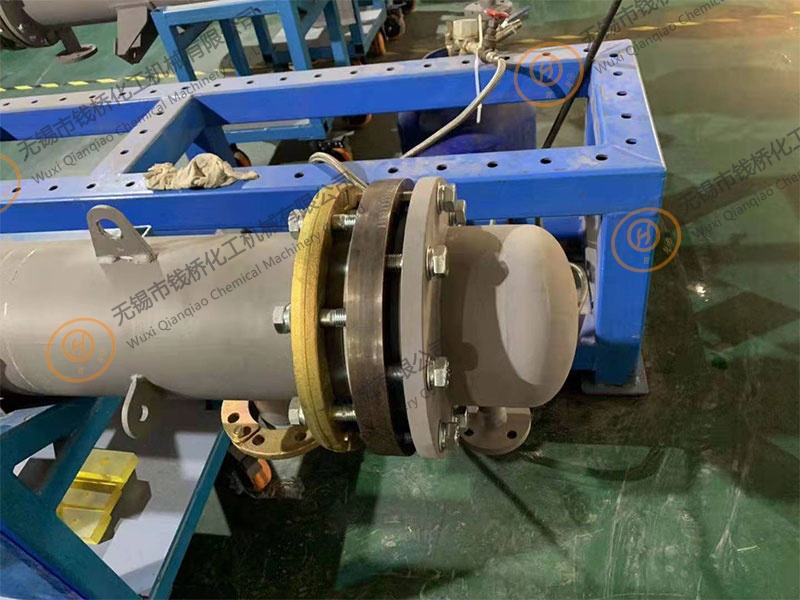


















Double tube SIC heat exchange
SIC tube heat exchanger, consisting of corrosion-resistant tube sheets and silicon carbide tubes, is the best solution for the most demanding corrosive conditions.
SIC tubular heat exchangers use heat-resistant tubes made of corrosion-resistant silicon carbide that are ideal for heating, cooling and condensing chemically corrosive process media. Typical applications include: bromine, sulfuric acid, hydrofluoric acid, nitric acid, hydrochloric acid and other acids; bases; halogenated compounds; salt solutions and organic compounds.
Double tube SIC heat exchange
● Test each heat exchange tube under pressure of 185 Bar before installation
● Heat exchanger housing diameter range from DN100 to DN600
● The standard length of the heat exchange tube is 1000 to 3000mm
● Heat exchange area is 1 to 60 square
● Heat exchange tube diameter is 14mm and 19mm
● Horizontal or vertical installation
● Applicable temperature range -19℃ to 100℃
● Applicable pressure range -0.1Mpa to 0.6Mpa
● Comply with CE, ATEX, FDA
● Double tubeSheet deSign
It is possible to separate the process fluid and the service fluid with a separation chamber, so that in case of o-ring leaking no mix will occur between the two fluids.
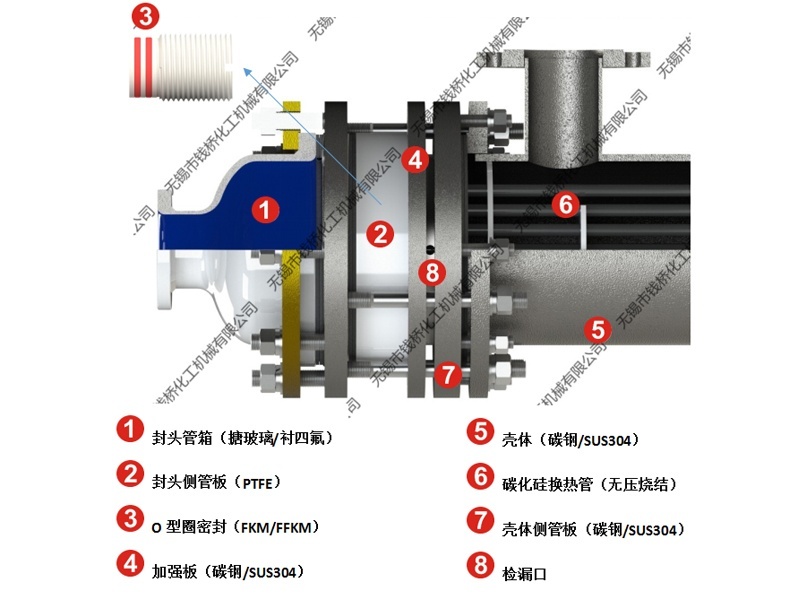
Red column must be filled Click to download
|
Design requests of SIC |
|||||
|
Device number |
|
|
|||
|
|
|
Jacket |
in side of heat exchanger |
||
|
Fluid name / component |
|
|
|
||
|
Total flow |
kg/h |
|
|
||
|
Gas flow |
kg/h |
|
|
||
|
Liquid flow |
kg/h |
|
|
||
|
Non condensable material flow |
kg/h |
|
|
||
|
Tempreture ( In / Out) |
°C |
|
|
|
|
|
Freezing point / Boiling point |
°C |
|
|
||
|
Density |
kg/m3 |
|
|
||
|
Viscosity |
cP |
|
|
||
|
Gas molecular weigh |
g/mol |
|
|
||
|
Molecular weight of non condensates |
g/mol |
|
|
||
|
Specific heat |
cal/g/k |
|
|
||
|
Thermal conductivity |
kcal/m/K/h |
|
|
||
|
latent heat |
kcal/kg |
|
|
||
|
Inlet pressure (absolute pressure) |
Mpa |
|
|
|
|
|
Current Speed |
m/s |
|
|
||
|
Pressure drop |
bar |
|
|
||
|
Fouling coefficient |
kcal/h/m2/°C |
|
|
||
|
Heat exchange capacity |
kcal/h |
|
|||
|
Heat transfer coefficient(clean / dirty / service side) |
kcal/h/m2/°C |
|
|||
|
Corrected logarithmic mean temperature difference |
°C |
|
|||
|
Heat exchange area (required / provided) |
m2 |
|
|||
|
Equipment selection data |
|||||
|
Design temperature |
°C |
|
|
||
|
Design pressure |
barg |
|
|
||
|
Test pressure |
barg |
|
|
||
|
Process number |
|
|
|
||
|
Inlet pipe diameter |
mm |
|
|
||
|
Outlet pipe diameter |
mm |
|
|
||
|
Material |
|
|
|
||
|
Weight (empty / full water) |
kg |
|
|||
|
Installation method |
|
|
|||
SIC tubular heat exchangers use heat-resistant tubes made of corrosion-resistant silicon carbide that are ideal for heating, cooling and condensing chemically corrosive process media. Typical applications include: bromine, sulfuric acid, hydrofluoric acid, nitric acid, hydrochloric acid and other acids; bases; halogenated compounds; salt solutions and organic compounds.


